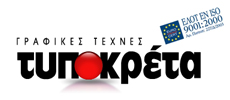Prefectures of Crete
Chania Prefecture
Municipality of ChaniaMunicipality of ApokoronasMunicipality of PlataniasMunicipality of KissamosMunicipality of Kandanos - SelinosMunicipality of GavdosMunicipality of Sfakia
Rethymnon Prefecture
Municipality of RethymnonMunicipality of MylopotamosMunicipality of AmariMunicipality of Agios VasiliosMunicipality of Anogia
Heraklion Prefecture
Municipality of HeraklionMunicipality of MaleviziMunicipality of Archanon - AsterousionMunicipality of FestosMunicipality of GortynaMunicipality of ChersonissosMunicipality of Minoa PediadosMunicipality of Viannos
Lassithi Prefecture
Municipality of MirampeloMunicipality of SitiaMunicipality of IerapetraMunicipality of Oropedio
Handcraft
Handcraft
The remains of the Minoan civilisation, that is, what has been found by archaeological excavations, are the most valuable proof that the Cretans, already in the prehistoric times, were skilled at the creation of hand made objects. Following the techniques and the tradition of their ancestors, the modern people of Crete, especially in the villages, express their creativity by making folk art objects of excellent quality.
In Rethymno various forms of folk art remain alive and are exercised with care: Ceramics, basket-making, wood-carving, stone-carving and, of course, weaving.
Some of these arts are traditionally exercised by entire villages, which largely base their economy of them. Ceramics is the basic occupation of many inhabitants, who make not only decorative pottery but also utensils.
Moreover, the village Alfa has a tradition in stone-carving, thanks to the wonderful, off-white and relatively soft stone that is mined from the area and has been used since the distant past in building and decoration.
In the mountainous villages of Mylopotamos, Anogeia, Zoniana, Livadia and in the rest of the prefecture, traditional weaving, knitting and embroidery are the basic hobby of the women in their free time. The techniques are handed down from mother to daughter.
Traditional materials are used in weaving, such as wool, cotton, linen and silk. The women produce the thread themselves and weave it in the loom. Even today they often dye the textiles with natural colours made from plants and white flowers of the Cretan earth.
The folk tradition is still alive today in the prefecture of Lasithi as well. The aspects of folk culture in Lasithi are expressed through the works and the activities of the local people. Wood-carving, that is, the art of engraving figures and scenes on wood has left an important heritage to the next generations. The professional wood artists have maintained this rare art by handing down their secrets from generation to generation.
Ceramics is a traditional art, the history of which is as old as the Minoan times. In the past, the pottery workshops flourished in the prefecture of Lasithi, producing storage objects of everyday use. Today, the art of ceramics is continued in Kentri, were pottery is produced in the same way as in the Minoan times. All the above aspects of folk culture were bread-winning and home handicraft gave women the opportunity to decorate their homes and make clothes for the members of their families.
Therefore, weaving, embroidery and knitting were, and to some degree still are, the basic occupations of women in the villages. Another kind of folk art which is relevant to home handcraft is the use of straw to make objects of everyday use like baskets, panniers etc. Objects of folk art can be seen today in the homes of the local people or in folk museums, where older objects are kept.



 ENGLISH
ENGLISH







